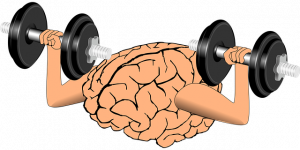Posted on March 12, 2018 by Jenny Cromack
Having been severely concussed several times myself and observed/treated many many clients with concussion I felt it necessary to spread a little knowledge about this invisible threat. I had one client message me recently asking whether they should attend their session; “I got concussed in the game Saturday, should I still train tonight?”. Although a serious event, often people will play this down and because they cannot necessarily see any physical damage they will continue to train and not give themselves the adequate rest they need.
What is Concussion?
Concussion is a type of traumatic brain injury and is very common in contact sports, such as rugby or boxing. It is, however, easily experience in everyday life; a trip or a simple banged head. It is misconstrued that concussion occurs through a direct blow and it is that blow that directly causes concussion. The word “concussion”, however, comes from the Latin “concutere” which means to shake, vibrate, or agitate violently. It is this shaking of the brain inside the skull that causes concussion. So when a boxer takes a blow to the chin, often it is not the blow that knocks them out or causes concussion, but instead it is the head movement that causes the brain to shake inside the skull. The shaking can cause bruising, and damage to the nerves and blood vessels in the brain.
What Are The Symptoms of Concussion?
Although, sometimes, there may be visible bruising or cuts to the head or face concussion doesn’t always have visible symptoms. In some cases the symptoms can take a few days to present and can linger for long periods or be over within a few more days. The following are common signs and symptoms to look out for:
- confusion or feeling dazed,
- dizziness
- clumsiness,
- slurred speech,
- nausea or vomiting,
- headache,
- blurred vision
- increased sensitivity (to light and/or noise)
- behavior or personality changes
- concentration difficulties
- memory loss
What Should I Do?
If you suspect any concussion, or have experienced any head injury you should always seek medical attention, even if there are not visible injuries. If after you have sought medical attention your symptoms worsen seek medical attention immediately. 80-90% of concussions tend to resolve within 10 days. To help manage the symptoms and ensure that further injury or complications do not arise the best course of action is to take a break. If symptoms are particularly persistent then take a day or two out of occupational activities, especially if these require heavy duty or manual duties. The effects of concentration and cognitive function may influence work capabilities and your experience of symptoms if you engage in overly intense work activities. Even non-manual jobs create mental stress and overload which could exacerbate symptoms. General guidelines differ, but taking advice from various sporting reports 2 weeks out of sporting or training activities is advised. Before your return to normal activities it is recommended that medical clearance is sought. A good pattern or rehabilitation to consider is as follows:
Stage 1 – Rest:
- Physical and cognitive rest.
- Gradual reintroduction of TV, driving, reading etc.
- Move to next stage when you are symptom free for 24 hours (Adult), 48 hours (Young Adults & Children).
Stage 2 – Light Activities:
- Light cardiovascular exercise e.g., walking, swimming, stationary bike (< 70% max heart rate)
- NO resistance training.
- Progress if symptoms do not return with this stage (usually allow two sessions before progressing)
Stage 3 – Moderate Activities:
- Increase intensity of previous activities, but do not engage in activities that put risk of re-occurrence of concussion.
- Running or sport-specific drill can be reintroduced.
- Reintroduce some body weight exercises but monitor intensity.
- Progress if symptoms do not return with this stage (usually allow two sessions before progressing).
Stage 4 – Increasing Load:
- Build intensity as before.
- Reintroduce light resistance training.
- Progress if symptoms do not return with this stage (usually allow two sessions before progressing).
Stage 5 – Return to Normal Activities.
- Build confidence in movements/exercises.
- Progressive build to normal intensity/load/frequency.
- Continue to monitor symptoms.
When it comes to concussion…USE YOUR HEAD!


